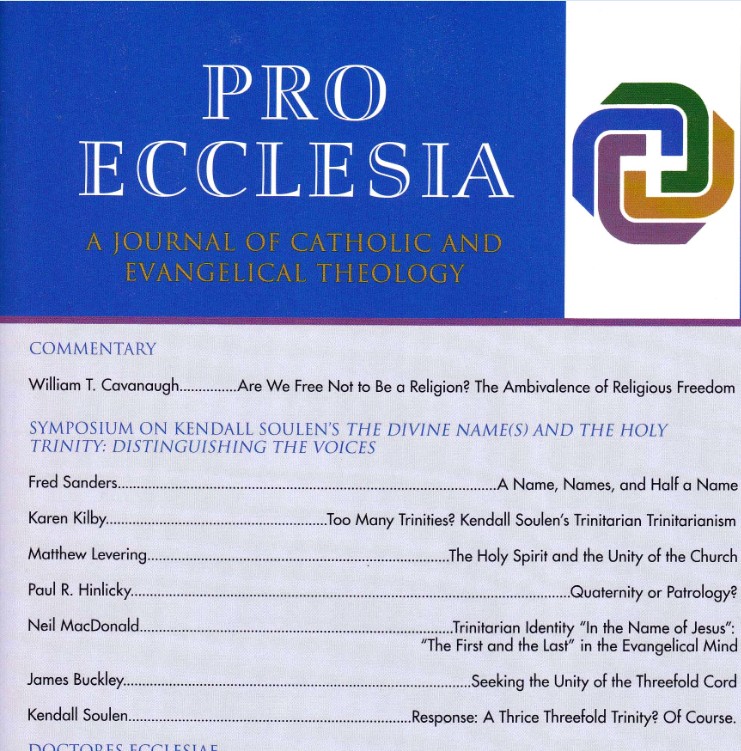Does God speak? Does he have a mouth that words come out of? Does God suffer? How does he feel the feelings he feels? Does God do things? Does he have hands that reach out and accomplish his will? Do we have a personal relationship with God? Is God somebody in particular, a center of awareness and choice, a person with a psychology and a history of relationships?
To some extent, all of these questions involve anthropomorphism; descriptions of God that make use of human forms or attributes. One way of understanding what Kevin Vanhoozer is doing in Remythologizing Theology is sorting out questions about God-given biblical anthropomorphisms like these. For example, if we say that God didn’t literally part the Red Sea with the blast of his nostrils, but that he did literally speak out loud with a voice that was heard, we ought to be theologically responsible enough to say why we draw the line of literalism where we do.
From the first page, when Vanhoozer describes the voice of God that sounds from heaven on the mount of transfiguration, Vanhoozer dares himself and his readers to be theologically honest (“honest to God”) and earnest about this claim: that God speaks. And he warns the reader that anthropomorphisms like these “are only the tips of the revelatory iceberg” (p. 192). And late in the book, almost as an aside, he notes that “there is no more challenging test of biblical reasoning competence than to identify and interpret anthropomorphisms” (p. 479).
That certainly sounds like the kind of thing we need systematic theologians for: to show us how to read the Bible right. But in a book like Remythologizing, Vanhoozer is mostly not doing hermeneutics. Instead, he’s mostly concerned with the doctrinal conclusions that modern theologians have drawn from their hermeneutical presuppositions, and the effects these have had on the doctrine of God.
Early on, Vanhoozer quotes this zinger from Swiss theologian Hans urs von Balthasar:
Today’s theologians, while they are aware of the traditional axiom of God’s unchangeability, and notwithstanding the danger of falling back into mythology, seem to have no qualms about speaking of the pain of God” (quoted on p. vii).
If the orthodoxy of good, old classical theism depicted a God who could speak but not suffer, the new orthodoxy (“kenotic-perichoretic relational panentheism”) depicts a God who cannot really speak, but can’t help but suffer. One of the controlling arguments of Remythologizing is that it is high time we got our anthropomorphisms in order.
For example, in the crucial question about whether God suffers, Vanhoozer ultimately answers no, contra Moltmann, just as he had earlier insisted that God truly acts and speaks, contra Bultmann. Despite the fact that the remythologizing in the title rhymes with and counteracts the demythologizing of Rudolf Bultmann, the more prominent theological foil throughout this project is Jürgen Moltmann, the most important leader of what some have called the “theopaschite revolution” of the twentieth century.
Though divine suffering is a key issue, and the one that Vanhoozer chooses to end the book with, it is not the only aspect of the doctrine of God that he handles. There are three major issues named in the subtitle (Remythologizing Theology: Divine Action, Passion, and Authorship); along with divine authorship and divine passion there is divine action, a subject much discussed in the context of natural science. It raises the question “Is theism necessarily mythological?” (p. 2) and shows up the new relational panentheism in its various forms as a way of sidestepping the problems apparently associated with affirming divine action.
If classical theism runs the risk of being mythological by depicting God as an outside agent who intervenes abruptly (a really big man), relational panentheism suggests that God takes no action, but merely influences intelligent agents. This deadlock is one of the places where Vanhoozer’s communicative theism indicates a third way: God does not abruptly intervene nor merely influence. Instead, as a communicator, God interjects (p. 316).
So without shouldering an entire doctrine of God, Vanhoozer judiciously picks his battles. That explains why, beginning with a voice from heaven, this book necessarily confronts the most epochal development in the doctrine of God in modern times: the shift toward panentheism, and what that shift implies for first theology. As Vanhoozer declares, “everything comes down to the way theology conceptualizes the God-world relation” (p. 175).














